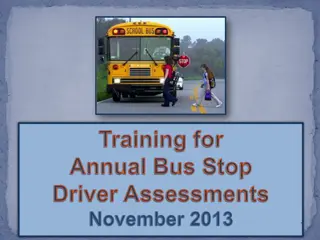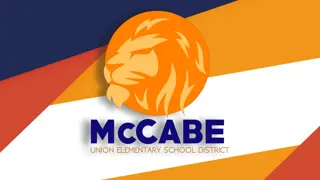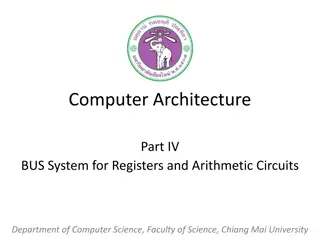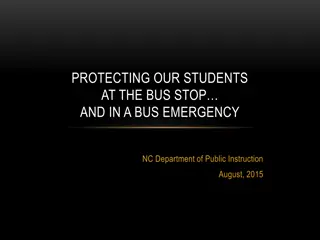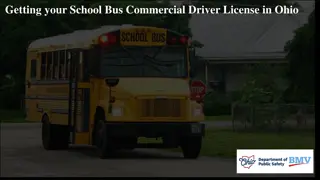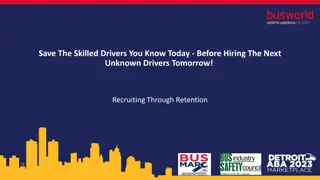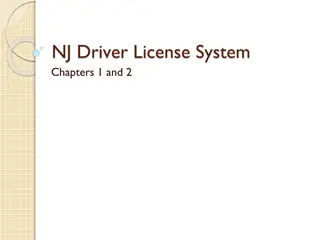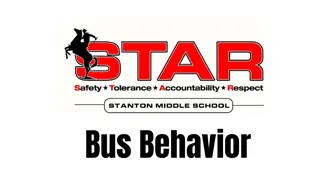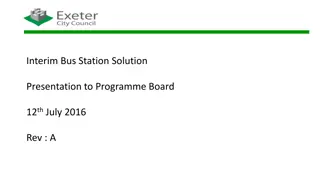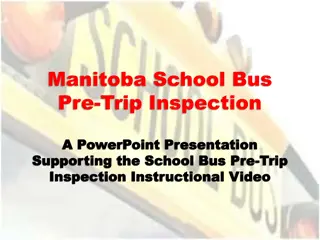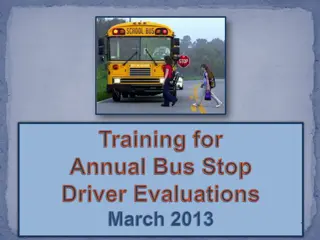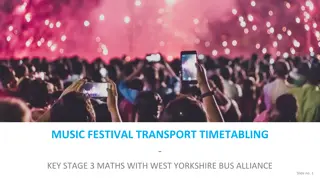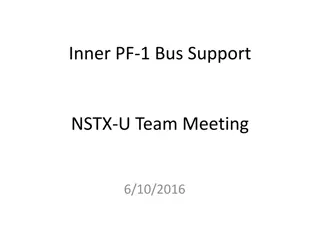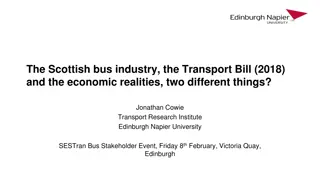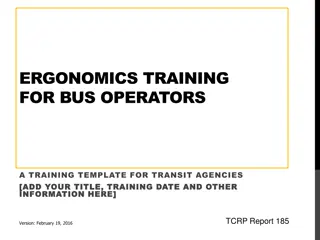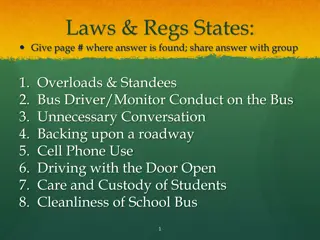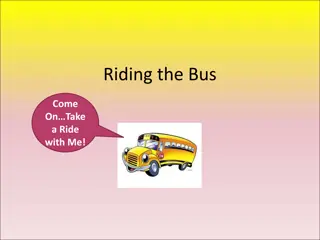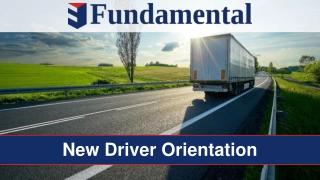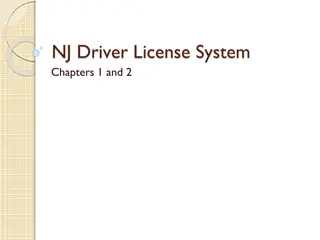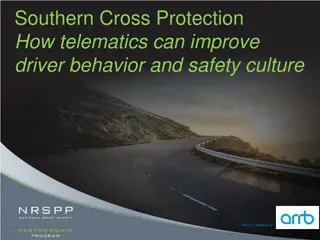School Bus Driver Training Guidelines
This slide show provides essential information for Forsyth County School Bus Drivers, covering topics such as pre-trip and post-trip inspections, radio transmission protocols, handling accidents, managing students, and submitting seating charts. It emphasizes the importance of proper documentation, communication with base, and ensuring student safety during transportation.
Download Presentation

Please find below an Image/Link to download the presentation.
The content on the website is provided AS IS for your information and personal use only. It may not be sold, licensed, or shared on other websites without obtaining consent from the author. Download presentation by click this link. If you encounter any issues during the download, it is possible that the publisher has removed the file from their server.
E N D
Presentation Transcript
Welcome Little Mill District Drivers Information in this slide show contains confidential information only to be shared with Forsyth County School Bus Drivers for training purposes.
Pre-trip & Post-trip Documenting pre-trip & post-trip form: N/A = not applicable to your bus = properly working = not properly working = repaired Always complete your form at the time you do your pre-trip and post-trip inspection.
What should I radio to base? I observed during my pretrip inspection that my headlight is not working? No radio transmission to base, indicate on pretrip sheet with an X. Circle the X when repaired after routes. I observed during my pretrip inspection that my eight way system is not working? Yes radio to base and wait for instructions. During my route I came up on an auto accident that was not blocking my lane of travel? No radio transmission to base. ONLY transmit if you are in a rural area and no other cars or people are on the scene. Most everyone now days has a cell phone. Continue with your route. During my route I observed and witnessed an auto accident? Yes, you witnessed it . Call base and report. During my route I have a KK student that has permission to get off the bus without a parent to receive them but tells me they don t have their key to get in the house. What should I do? Think before you speak. Prepare your transmission in your head for code one. Give only the necessary information. Radio to base: code one, school name, first name of student and their last name initial in alpha code. If base has a question, they will ask you. Don t supply additional information unless asked to do so by base. Should I radio to base if I need a bus lane attendant or Administrator to my bus in the bus lanes? No radio transmission to base. AM Sound your horn and activate your hazards upon your arrival to the bus lanes if you need an administrator to your bus. There is always an administrator or bus lane attendance in the bus lanes to receive students. No need for radio transmission. PM During loading sound your horn and activate your hazards for assistance from an administrator or bus lane attendant. These efforts are to reduce radio traffic and keep the radio clear for emergencies and necessary transmissions.
Seating Charts Floating students are assigned daily. Assign them to seat 25 noted at the bottom of your seating chart. A floating student should only ride occasionally and be assigned to an open seat that you note daily in your log book.
Seating Charts Seating charts can be submitted electronically or hand written. Only assign students that ride your bus. Names should be listed as their legal name as shown on student list. Indicated the name they go by in (parenthesis). List all three names if they go by their middle name. List both hyphenated last names if this applies. Indicate helpers with a capital H to the right of the students name. These are route helpers when you have a sub and emergency evacuation helpers. Indicate am, pm or both of their ridership. Infrequent riders should be listed as floaters. Log their seat assignment daily in your log book. On your seating chart these should be assigned to seat 25. Write these assignments in at the bottom of your chart. Changes can be sent by email or hand written indicating the student s name and new seat assignment. All permanent changes should be reported in a timely manner.
Boarding Pass with different route assignments AM & PM
Boarding Pass with joint custody
TIOS Transportation Information Operating System
Student List The time listed on your student list is the time the student should be at the bus stop. You should service your first stop at the time indicated by your district supervisor for your route. This time should be five minutes after the time listed on your student list. Refer to your am list for authorized students to transport on your am route. If you have a student that boards that is not listed on your student list, get their name, have them sit in the front seat and turn them over to a bus lane attendant/administrator upon your arrival to the bus lanes. Then please send an email to your supervisor after your am route requesting direction or an addition to your student list. Refer to your pm list for authorized students to transport on your pm route. Stand at your seat, know who is boarding your bus. When a student boards, refer to your pm student list for authorization and bus stop assignment. If the student is not listed on your student list, activate your hazards and sound your horn for assistance. Inform the bus lane attendant requesting assistance and/or authorization. If an administrator gives you verbal direction to transport this student for one day, log this in your log book. Upon completion of your afternoon route, please send an email to your supervisor requesting direction or an addition to your student list. Parent permission letters/notes: Record on your student list then send in upon receipt to be input in our system. These permissions roll over year to year.
Model what you expect Stand at your seat loading and unloading at the schools. Speak to students as they enter and exit. Know who rides your bus. Know their names. Drink only water. Only drink water when your bus is at a complete stop, preferably without students. Do not drink while driving Be the authority figure on your bus. Build effective relationships. Put your personal phone away during route time. Give your family your supervisors cell number for emergency purposes. We will come relieve you from your route if you are needed for an emergency situation.
What do I log in my log book by date? Individual student behaviors Phone calls Parent notifications Bus discipline form referrals Odd occurrences that you might want to remember in the future. Example: My bus hood was open upon my arrival, yet I found no damage. Journal some good stuff too!
Parent Phone Calls Greeting & Introduction: Hello! My name is Jennifer Cox. I am Justin s bus driver. This is a courtesy call to you. I would like your help with Justin on the school bus. Statement of Problem: State the specific problem, including language or terminology used by the student. Relate the problem to the specific safety rule for the bus using safe, orderly and respectful expectations. Information/Consequences: I have already spoken to Justin about this and have written this incident I my bus log as directed. I have also reassigned his seat to the front of the bus. (state any other action taken) Request for Support: I wanted to let you know about this problem before it becomes more serious and ask for your support in talking with your child about this. Warning for Future Offenses: If the problem continues, the next step will be a written parent notification form sent home to you. Thanks/Closing: Thank you for your cooperation and support. Together, I feel we can resolve this problem.
Accidents Any time your bus comes in contact with another vehicle or object you must report it by bus radio at the scene of the accident to dispatch.
After reporting an accident Retrieve the student list that matches your run. Pull the am list if the accident occurs on the am route, pm list if the accident occurs on the pm route. Begin indicating by check mark, the students that are on the bus at the time of the accident. See your supervisor of that route, immediately after completion of your shift to complete accident reports.
Does Garry Puetz ride your bus?
End Of The Year Reviews & Classified Personnel Appraisal End of the year reviews are quickly approaching. Be on the lookout for your appointment time to be emailed to you soon. The email will contain your date and location of our meeting.
Upcoming Transportation Draft Route maps will be available for your viewing soon on the internet. Pay attention to your route and set hours. Sometimes they change. Soon emails will be sent regarding your intent for the next school year. Drivers that chose their route in the 2013 draft will have the option to lock their route for the next school year. All other drivers and driver that don t lock their routes will go into the draft process to choose a route for the next school year.
Kindergarten Round Ups Chestatee Kindergarten Round Up July 30th Chattahoochee Kindergarten Round Up August 4th Your attendance is mandatory at these events.
LMMS District had the most participation in road-e-o winning the PIZZA PARTY! LMMS District Picnic Friday, May 2, 2014 at Charleston Park 11:30 AM Rain date: Friday, May 9, 2014 Pizza & bottled water will be provided. Please plan to bring a finger food or dessert to compliment our lunch. Also, plan to bring a chair to sit in. There are only concrete picnic tables at this location.
End of the year There are 29 days of school after today. All buses must be turned in after your last PM route on the last day of school All LMMS District Drivers should go directly to the North Shop after completion of their last route. Pull to the back of the shop in the area where the skills assessment course is performed. All cleaning should be done prior to the last day of school. You will need to do a final sweep after your last route. You should clean your bus, all trash and personal items removed, windows cleaned, route numbers removed, assigned seat tags and the adhesive that was used to secure them. (It is highly discouraged to put adhesive on your bus, due to difficulty of removal.) If your ceiling has black mold on it, you should wipe it periodically through out the school year to control it. Mold and dust from your ceiling must be removed prior to the last day of school. This can be done by wiping your ceiling and roof hatches with a wet cloth. The ledge above the seat numbers, the dash and the driver compartment should be free of dust. The floor and steps of the bus should be free of gum, adhesives and dirt. The bus seats should not have dust, mold, mildew or ink or pen marks. Tears should have already been reported to the bus shop for repair at your bus service. If you have a tear when turning your bus in you should be prepared to complete a BDF on the student that occupied that seat on the last day of school. All student information, seating charts and anything that has confidential student information on it will be collected by the lead team beginning the last week of school. The inside of your bus should be very clean. It is not necessary to wash the outside of your bus prior to end of school. If you chose to wash any part of your bus it MUST be done at least 3 days prior to the last day of school to allow the bus to completely dry to avoid any problems with mildew. The last three days of school are early release for high school only. Adjust your schedule if you are a high school driver. Once your district supervisor has approved and signed the school bus check in/out sheet you will then take your bus to your assigned SUMMER parking location. You will receive this info at a later date. Once your bus is parked you will need to perform your post trip. You should make sure all windows are up, roof hatches closed, and secure the front and back doors. Note your mileage on your bus check in/out sheet and your post trip form. You will then turn your keys into a mechanic at your parking location and give your completed post trip and bus check in /out form to a LMMS Lead Team member at your parking location.
Thank you for doing what you do best! We are professional and caring employees providing transportation services that protect students, support quality learning and improve the community.


